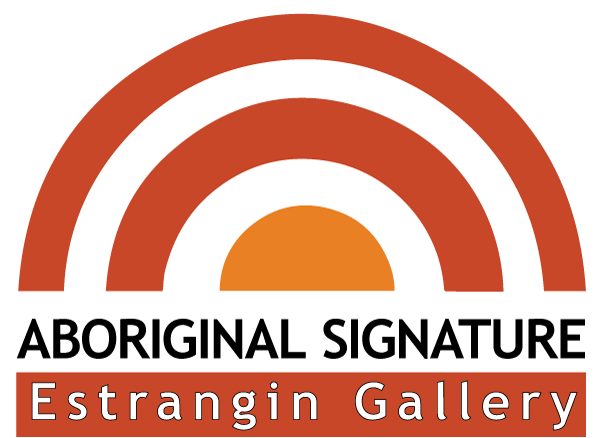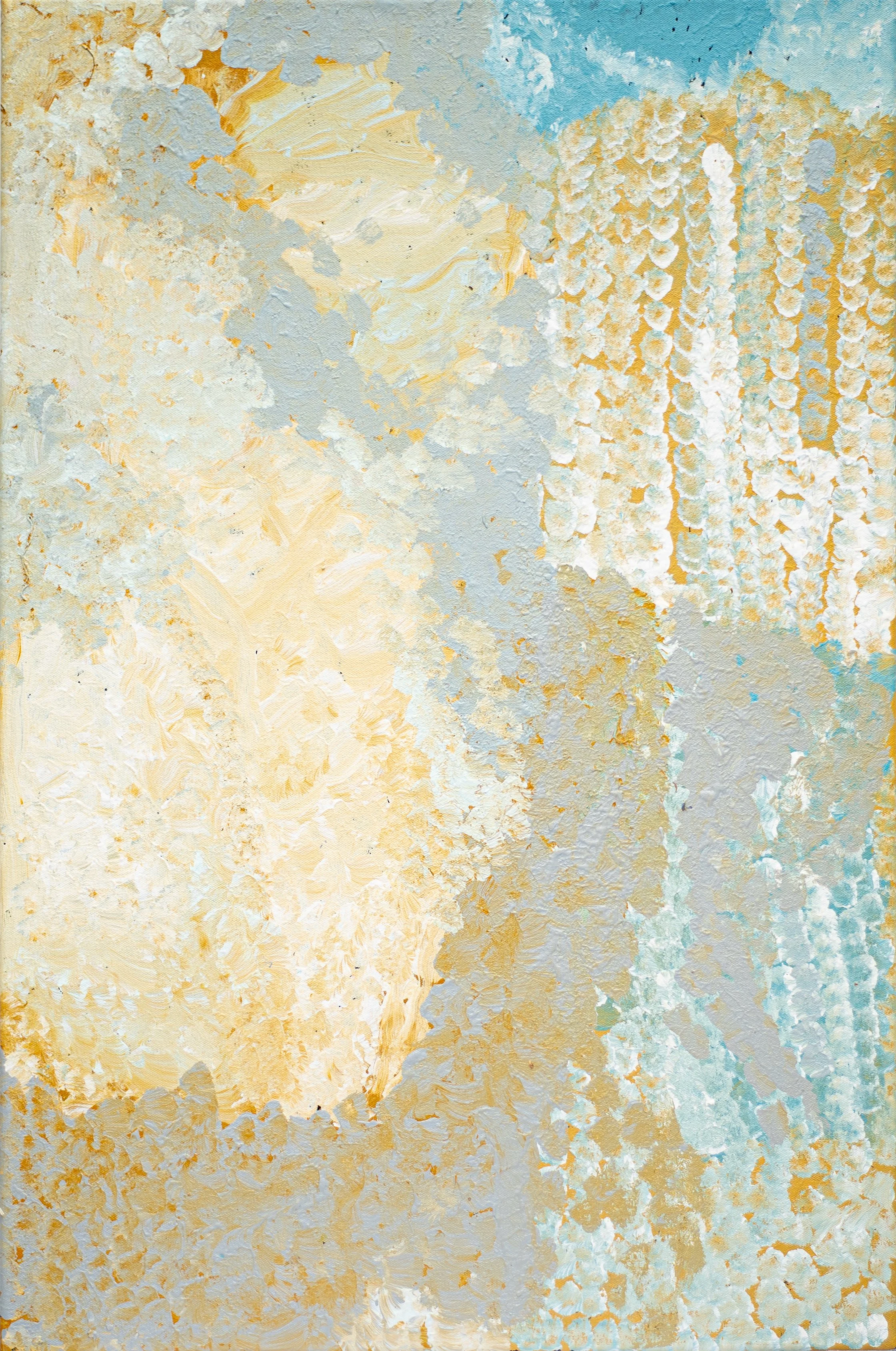Bugai Whyoulter (1939) - Punmu - 61 x 91 cm - 24-1111
Bugai Whyoulter (1939) - Punmu - 61 x 91 cm - 24-1111
Artiste : Bugai Whyoulter (1939)
Titre de l'œuvre : Punmu
Format : 61 x 91 cm
Provenance et certificat : centre d'art aborigène de Martumili
Référence de cette peinture : 24-1111
Demander le prix de l'œuvre / Enquiry
Explications pour cette œuvre :
"This is daddy's ngurra (home Country, camp), mummy's ngurra. I used to go to Punmu to visit people there."
- Bugai Whyoulter
Punmu refers to a region and an Aboriginal community within its vicinity, located 670km North-East of Newman. Created during the return to Country movement of the 1980s, with the recognition of Martu land rights and native title, the community was named after a nearby Jukurrpa (Dreaming) story. Punmu community sits on the edge of a large salt lake known as Nyayartakujarra, or Lake Dora. The lake runs south into Karlamilyi River (Rudall River). Surrounding Punmu are numerous fresh water soaks and the red tali (sandhills) typical of the area. The most frequently visited yinta (permanent springs) around Punmu include Wirlarra, Rawa, Yilyara, Jila-jila and Tuu-tuu.
Bugai grew up in and travelled through this Country during the pujiman (traditional, desert-dwelling) era. At Punmu, Bugai and her family would collect minyarra (bush onions) and hunt jipuku (rabbit). Bugai recalls a specific time when she travelled here with her mama (father) as a juri (beautiful, good) time. She paints the Country around Punmu, paying special aention to the many yenta and tuwa (sandhills), and to the pastel palette characteristic to the expansive white plains of Nyayartakujarra.
The Country around Punmu features in several Jukurrpa (Dreaming) stories. Of particular importance is the story of the Jila Kujarra (Two Snakes), one of the key Jukurrpa narratives for the Martu. Though the story belongs to Warnman people, it is shared across the Western Desert with several other language groups. The narrative centres on the travels of two snakes as they are pursued by the Niminjarra, spiritual ancestors of the Warnman people.
© Photo Aboriginal Signature Estrangin Gallery, and text with the courtesy of the Artist and Martumili Arts

